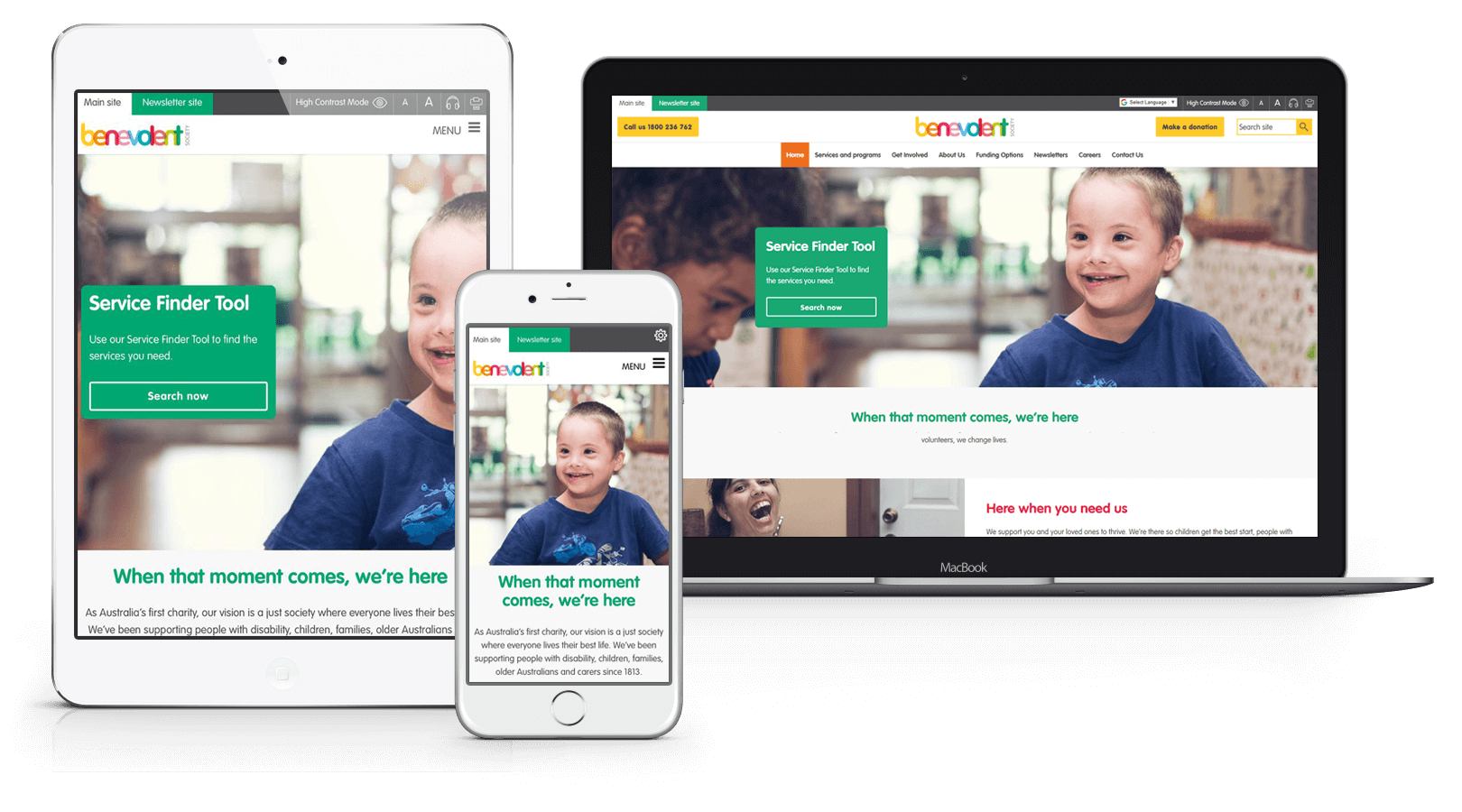Web Standards is defined as a formal set of standards and technical specifications used to define aspects of the world wide web. These are best-practice standards used by organizations to build web sites and web applications.
History of Web Standards
In 1989 whilst working as a researcher at CERN, the European Particle Physics Laboratory, Tim Berners-Lee invented a tool called Enquire. This later became the World Wide Web as we know it today. Having written the specification for HTTP and HTML he founded the World Wide Web Consortium or W3C for short in 1994. The W3C’s mission is “to lead the World Wide Web to its full potential by developing protocols and guidelines that ensure long-term growth for the Web”. The W3C primarily pursues its mission through the creation of Web Standards and guidelines. Since 1994, W3C has published more than 100 such standards, called W3C Recommendations.
What are the commonly referenced W3C Standards?
HTML - HyperText Markup Language
HTML is the publishing language of the World Wide Web developed by Tim Berners-Lee while at CERN. HTML has been developed with the vision that all manner of devices should be able to use information on the Web: PCs with graphics displays of varying resolution and color depths, mobile phones, hand held devices, devices for speech for output and input, computers with high or low bandwidth, and so on. HTML has been extended in a number of ways since its inception
HTML 2.0 was developed in 1994 to codify common practice so that it would work across different browsers and platforms. HTML 3.0 proposed much richer versions of HTML however it never reached consensus and led to HTML 3.2 in 1996.
HTML 4 extends HTML with mechanisms for style sheets, scripting, frames, embedding objects, improved support for right to left and mixed direction text, richer tables, and enhancements to forms, offering improved accessibility for people with disabilities.
HTML 4.01 is a revision of HTML 4.0 that corrects errors and makes some changes since the previous revision.
HTML5 is the new kid on the block. All the cool kids want to play with HTML5 however "HTML5 is currently under development, as the next major revision of the HTML standard. Like its immediate predecessors, HTML 4.01 and XHTML 1.1, HTML5 is a standard for structuring and presenting content on the World Wide Web. The new standard incorporates features like video playback and drag-and-drop that have been previously dependent on third-party browser plug-ins." (source: www.wikipedia.com)
XML 1.0 - Extensible Markup Language
XML is a publishing language like HTML, but instead of having a single, fixed set of elements, it allows you to define your own - or use a set made by someone else. Some applications of XML, such as XHTML and MathML, have already become W3C Recommendations.
Style sheet standards, such as CSS and XSL, offer a variety of options for specifying how XML elements are to be rendered. Standards-compliant support for direct rendering of XML is spotty in browsers, so for presenting information to humans, HTML (or XHTML) with CSS-driven styling is the way to go. XML is mostly used for machine-to-machine communication today.
XHTML - Extensible Hypertext Markup Language
XHTML 1.0 is a reformulation of HTML as an XML application. XHTML 1.0 can be seen as ideologically coming from HTML 4.01, and being technically stricter because of XML’s influence.
XHTML will display in your browser identically to the equivalent HTML. You might want to use XHTML if there is any chance you’re going to need to reprocess your content, for example to send it to a PDA; XML’s stricter syntax rules make automatic processing of XHTML much easier and cheaper than ordinary HTML.
Ideologically, XHTML 1.0 inherits the following general concepts from HTML 4.01:
- That presentation and document formatting should be separated via style sheets
- That documents should be made accessible
- That documents should be internationalized
By doing this, your work will be extremely structured because there are virtually no presentational attributes in XHTML. The separation of structure and presentation is complete here, and all of your presentation work will go in a style sheet.
CSS - Cascading Style Sheets
Cascading Style Sheets (CSS) is a mechanism for changing the appearance of HTML or XML elements, by assigning styles to elements.
Stylesheets can be used to consistently define the appearance of an entire site. Following the introduction of CSS, the W3C recommended that layout-specific features in HTML be phased out and replaced by stylesheets, creating a simpler and more structural World Wide Web.
WCAG 2.1 - Web Content Accessibility Guidelines
Web Content Accessibility Guidelines (WCAG) 2.0 defines how to make Web content more accessible to people with disabilities. WCAG 2.1 is an extension of WCAG 2.0 that focuses on improving web accessibility for people with cognitive and learning disabilities, low vision, and users of mobile devices.
"Accessibility involves a wide range of disabilities, including visual, auditory, physical, speech, cognitive, language, learning, and neurological disabilities. Although these guidelines cover a wide range of issues, they are not able to address the needs of people with all types, degrees, and combinations of disability. These guidelines also make Web content more usable by older individuals with changing abilities due to aging and often improve usability for users in general" (source: www.w3c.org)
For more information, read our blog on AA compliance and why WCAG 2.1 is important.
What are the advantages of using web standards?
Most web standards are generally designed with forward- and backward-compatibility in mind — so that data using old versions of the standards will continue to work in new browsers, and data using new versions of the standards will “gracefully degrade” to produce an acceptable result in older browsers.
- Compliant documents can easily be converted to other formats, such as databases or Word documents. This allows for more versatile use of the information within pages.
- Greater visibility in web searches. The structural information present in compliant documents makes it easy for search engines to access and evaluate the information in those documents, and they get indexed more accurately.
- Accessibility is an important idea behind many web standards, especially HTML. Not only does this mean allowing the web to be used by people with disabilities, but also allowing web pages to be understood by people using browsers other than the usual ones e.g. voice browsers, braille browsers, hand-held browsers with very little monitor space etc.
- A website may go through several teams of developers during its lifetime, it is important that those people are able to comprehend the code and to edit it easily. Web standards offer a set of rules that every Web developer can follow, understand, and become familiar with: When one developer designs a site to the standards, another will be able to pick up where the former left off.
Web standards and your Content management system
A content management system is key to ensuring consistent web standards for your intranet, portal or website solution.
Design Flexibility
Designers have full access to HTML and CSS and can leverage JavaScript as the need arises. Designers can create new Master Pages to help non-technical users create new pages with consist design and formatting on the fly.
Compliance
Any solid content management system should be committed to supporting and maximising accessibility for all web users.
In the Elcom platform, Level AA Conformance to Web Content Accessibility Guidelines 2.1 has been delivered to base administration screens, the core authoring experience and selected modules. All our base administration screens, the core authoring experience and selected modules are AA compliant. This is beneficial for departments requiring compliance with government regulations regarding the need for accessible websites.
The Benevolent Society
The Benevolent Society is Australia's first and oldest charity. It is an independent, non-religious, not-for-profit organisation which aims to help families, older Australians and people with disability live their best lives.
Given their audience, it was crucial the website complies with current standards for web accessibility. With Elcom, they have access to WCAG compliant HTML and CSS compatible templates.
At the top of their website, they have also included the ability to choose a high contrast mode, easily adjust the font size of text, change text into another language using the Google Translate tool, and use assistive technology which provides text-to-speech functionality.
From meeting web accessibility standards, to offering a Service Finder tool which provides a personalised view of services available, the website has been carefully designed to provide a seamless user experience for different stakeholders.
Read the full case study here.

References: Web Standards Project, World Wide Web Consortium
